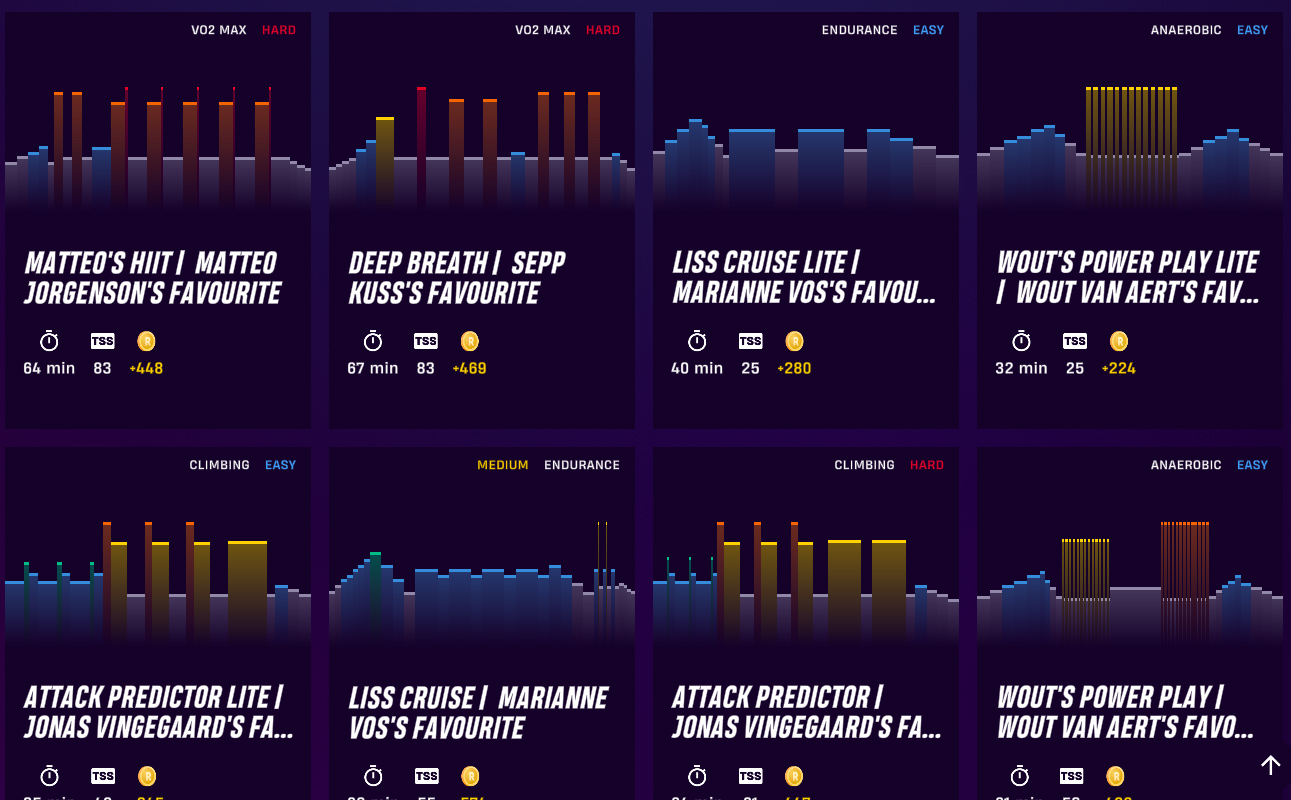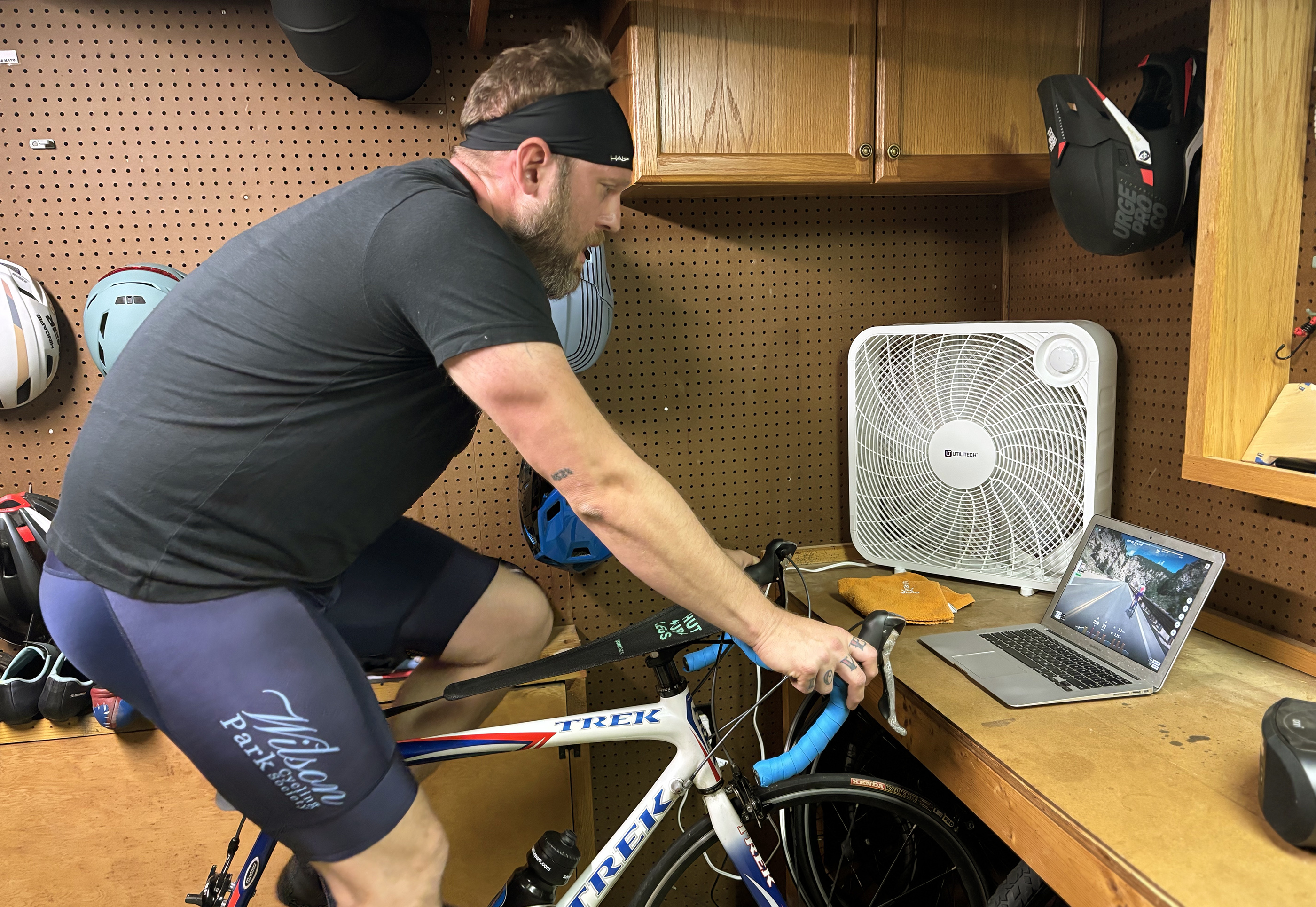I knew something was very, very wrong the instant it happened. But for the most pliable of us, a 42-year-old man’s straight-legged knee is not supposed to come up and touch his nose. But that’s exactly what mine did, mere moments after the captain throttled the boat during my first-ever attempt at waterskiing.
The result: a torn hamstring. So torn, in fact, that, at one point, the black-purple bruise extended from the bottom of my ass to the top of my ankle.
Gone were the half-dozen cross races I was hoping to do last autumn, the mountain bike races, weekly BMX events that my seven-year-old son and I compete in together, and the track races and training at our nearby velodrome. Gone were my beloved Saturday morning rides, which, at minimum, tick around 100 kilometers.
I was off the bike for the foreseeable future and, the doctor promised, whenever I did return, it would be a long time before I could make any real power; power that was, at the time, gave me an FTP (Functional Treshold Power) of 340 watts.
Somewhere in those dark, fitness-free months, a publicist working with the online training app Rouvy contacted me. Might I be interested in trying out the app, specifically the training plan created by Dutch uber team Visma-Lease a Bike, to see how it might impact my fitness, he wondered.
And so began my sixteen-session, six-week training plan.
While Rouvy’s training sessions are intended to be done on your indoor trainer, they can easily be complemented with outdoor rides, especially those focused on longer, more sustained, and endurance-building zone-two efforts.
The latest race content, interviews, features, reviews and expert buying guides, direct to your inbox!
During my Visma Lease-a-Bike training block, I still stuck to my regular Saturday metric century, a three-ish hour ride which averages around 20mph at 230 watts.
(Image credit: Michael Venutolo Mantovani)
Training plan kick off
The plan started, as all training blocks should, with an FTP test. I chose the 40-minute ramp test which, after a solid warmup, kicked up the resistance by twenty watts every minute. The idea is to hold on and keep pedaling for as long as possible.
The results shocked me, owing no doubt to the fact that I was staying as fit as possible during my recovery with regular HIIT workouts (avoiding any squats, deadlifts, or explosive lower movements), plenty of walking, and more yoga than usual. I notched a 315w FTP, a five-minute power output of 371w, and one-minute output of 552.
At around 255 pounds (or 116kg), I was average at best, capable of 2.7 watts/kilo. Still, going into the FTP test, I thought I was going to be in much worse shape than 315w.
But, every fitness journey has to begin somewhere. Once I had all of my base metrics, I jumped in, clicking on the first session the next morning.
Training was easy, which is one thing I love about virtual riding. For my road rides, I have to kit up, prep my bike, ride (or drive) to the start of the ride, BS with my riding buddies for five or ten or fifteen minutes before finally setting off for the ride. With virtual training, all I need are bibs, socks, and two bottles of water. Everything that needs to happen happens twenty feet away from my bedroom, in my basement pain cave-slash-bike shop. Given the ease of bite-sized, forty-ish minute sessions, I had no problem fitting the routine into my daily life.
Notice how I said “training” was easy. Not “the training.” Because, while the process of training—the act of getting on the bike and into the workout—was easy, the training itself was anything but.

(Image credit: Michael Venutolo Mantovani)
The brutal reality
The Rouvy workouts were no doubt tailored for the working-class cyclist; for the person who doesn’t have five daily hours to commit to training rides. Surely, Sepp Kuss’s training rides aren’t exactly the thirty-eight-minute VO2 max ride I did in my basement. However, the principals were the same, taken from Sepp or Matteo Jorgenson or Wout van Aert and shrunken down to suit the average Joe, the weekend warrior and his 2.7 w/kg. And man, were they brutal.
“The virtual training sessions are quite similar to the real-life training our pro riders do in preparation for events,” said Visma Lease-a-Bike coach Mathieu Heijboer. “While our riders train on a variety of terrains, the goal is the same: building endurance, strength, and FTP.”
Heijboer added that the key to increasing FTP is a combination of consistency and progressive overload, which was clear as I made my way through the training block’s sixteen workouts. Week one, while tough, was nowhere near as taxing as week two. Week three put them both to shame and by week four, I was glad to be nearing the finish. Of course, of that is to say that week one was easy. But the knowledge that my strength was, in theory, increasing helped ease the pain of training.
By the end of each of the block’s sessions, which averaged around forty minutes, I was toast. A glistening puddle of sweat pooled beneath my bike, my bibs and shirt were soaked, and my legs screamed for mercy. Pound-for-pound, second-for-second, these were some of the most intense workouts I’ve done on a bicycle.
But were they working?
Halfway through the sixteen-session block, it was hard to say, owing in large part to the versatility of the workouts.
The workouts ticked all of the notes in a cyclist’s toolbox. There was cadence work and VO2 max rides, climbing efforts, endurance rides, and anerobic workouts.
Some, like Simon Yates’s thirty-four-minute spin up ride, which focused on the all-important cadence work, felt almost like a hard warmup.
While others, like Steven Kruijswijk’s eighty-minute tempo workout, had me producing 85% of my FTP for four eight-minute blocks with just 90 seconds of rest between (that one had me, an avowed atheist, seeing Jesus).
Most of them were somewhere in between, though closer to Kruijswijk’s hell session than Yates’s easy day.
Given the consistent inconsistency of the workouts and the fact that I felt absolutely drained after most of the sessions, I wouldn’t know if my overall fitness, the all-important FTP, was being impacted. But, according to Heijboer, so long as I stayed consistent and followed the plan, my strength should increase.
“This process trains your body to handle and clear lactate more effectively, which ultimately lets you sustain harder efforts for longer,” he said. “So, it’s not just about doing hard sessions; it’s about doing them in a way that your body can adapt to over time. Consistency is crucial.”
After sixteen blocks of training, I climbed back on my trainer to see what, if any, impact training like a Visma Lease-a-Bike rider had on me.
Before my second FTP test, I revisited my interview with Heijboer, who outlined what seemed like a huge jump for me.
“For someone newer to structured training or coming back after some time off, a 5-10% increase over 6 weeks is a solid target,” he said.
What the experts say
In addition to Heijboer, I spoke with Durham, North Carolina-based Mandy Gallager, who is a coach with Level 1 and Power-Based Training certifications from USA Cycling, as well as being a TrainingPeaks coach.
What is the key element to getting fitness back after time off the bike?
To get back on track after time off the bike, focus on consistency. Develop a realistic and attainable plan with gradual goals. For many of us, it’s impractical to jump from zero to 20 hours per week on the bike. Consider factors that kept you off the bike, such as job, family obligations, injury recovery, or training burnout, and incorporate them into your plan.
How can riders stay motivated during training blocks, especially during those middle weeks/sessions, which often can slog?
Motivation can wane without a clear end goal or our “why.” Reflect on your “why” and how each workout contributes to your goal/your reason why. Changing your training environment can help; if training indoors, try a different location. If training outdoors, consider a new route. Build community and connect with others for encouragement. During workouts, break them into manageable chunks, telling yourself, “I can do this for 5 more minutes,” until you complete the session.
What can we do off the bike to help our fitness?
What you do off the bike is crucial for fitness. Cross-training, especially strength training, is vital for overall fitness, but especially bone health. Ensuring you have proper nutrition, adequate rest, and manage stress effectively, will significantly impact your ability to reach your fitness goals.
The results are in

(Image credit: Michael Venutolo Mantovani)
I’m hardly new to structured training. However, those four months that found me off the bike, tending to my torn and healing hamstring, meant I was looking for as much as a 10% gain in FTP. Could my FTP have jumped from 315 to 346 in just six weeks?
Maybe. To quote the great Greg LeMond, “It doesn’t get easier. You just get faster.”
And that couldn’t be more true than during the soul-crushing FTP ramp test. Because in those 40 mintues, I suffered more than I did on Kruijswijck’s tempo ride, more than I did on Mattteo Jorgenson’s Vo2 max HIIT ride, more than I did on Jonas Vingegaard’s climb ride.
But, in the end, true to Heijboer’s promise, I got stronger. Though I didn’t quite see the 10% increase of 31 watts, the result was a 6%, 19-watt jump, from 315 to 334, six watts shy of my pre-injury 340 mark. My five-minute power increased 5% from 371 to 390, as did my one-minute output, which went from 552 to 580w.
So, can I expect another 6% increase if I spend the next six weeks training “with” Visma Lease-a-Bike?
Unlikely. “As you get fitter, progress tends to slow down and diminishing returns usually start when you’ve already made significant progress, Heijboer said. “After the first few training blocks, you might see big improvements, maybe 5 points. But as you get fitter, those gains will naturally start to decrease.”
“Plateaus are normal and happen when your body has adapted to the current training load. That’s when you need to get creative. Change up the type of efforts, increase volume, or vary the intensity to continue progressing. FTP gains are rarely linear.”
Whatever. After four months sidelined with an injury, it felt great to just be on a bike. Getting stronger is just icing on the cake.

